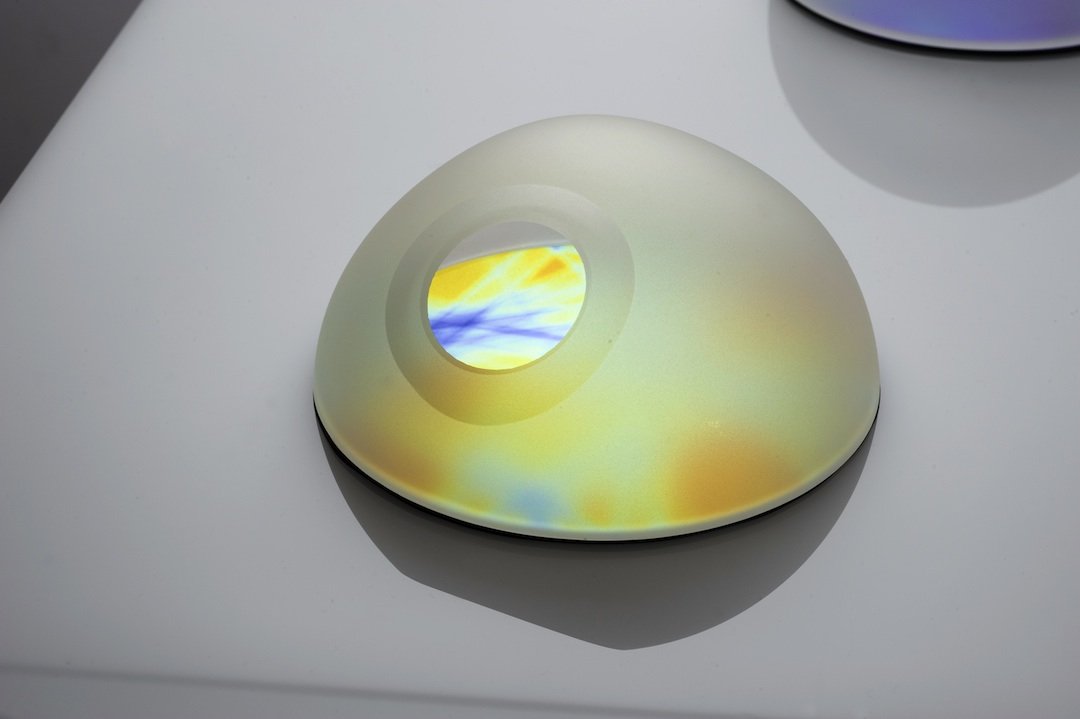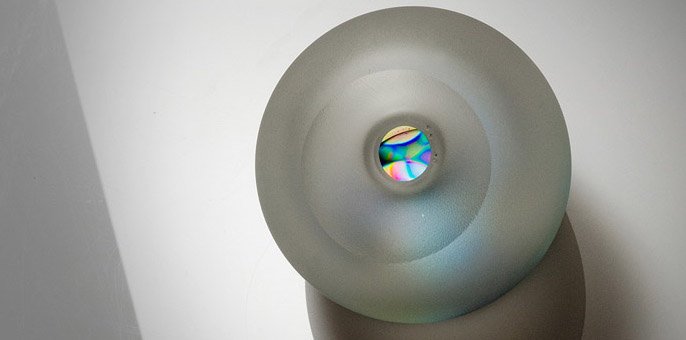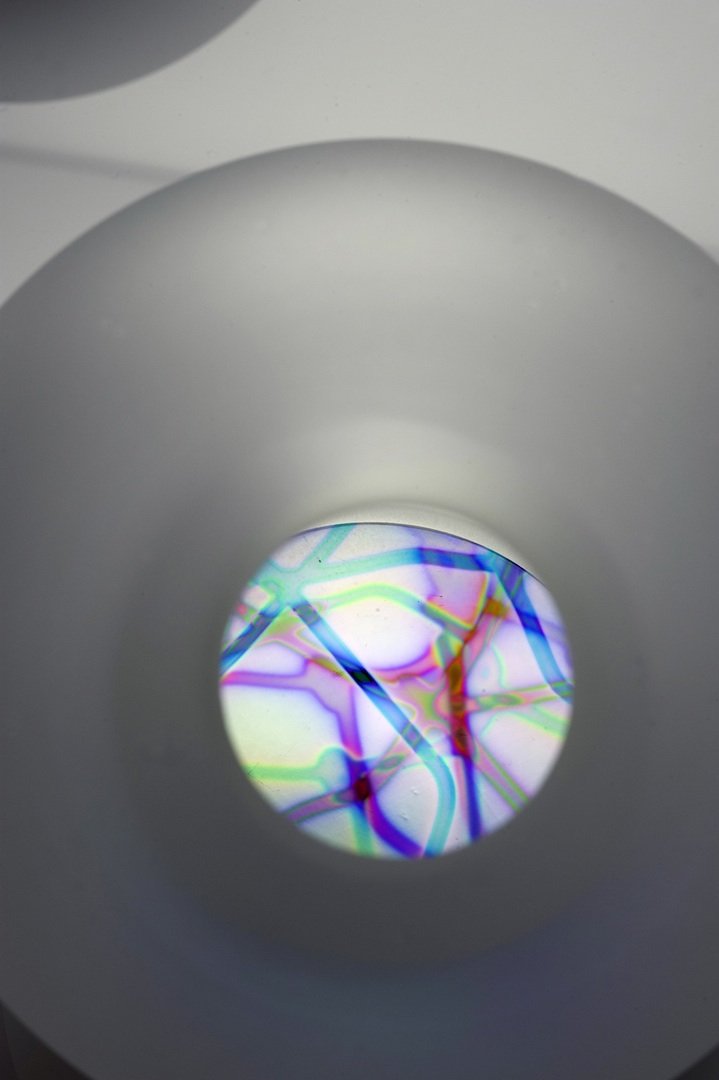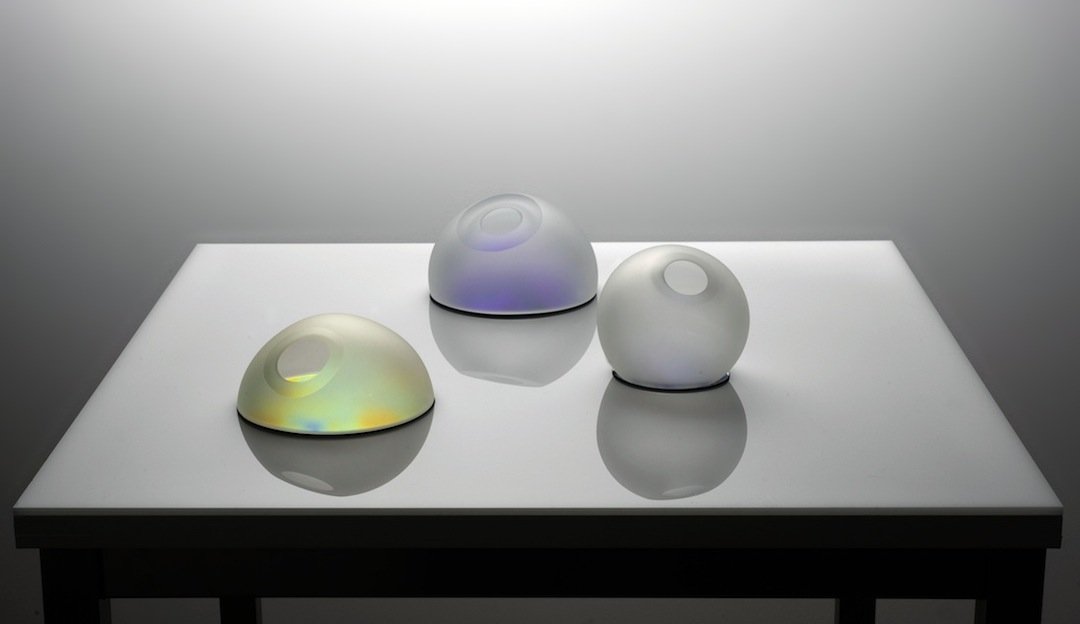





Beyond the Visible, 2009.
Hand blown glass, sandblasted and dichroic glass.
L 200 W 200 H 180 mm
In Beyond the Visible, the view through the lens of the microscope is investigated. Delving within the eye, the looking glass takes on the physical form of the subject. The structures of cells, atoms and molecules can be viewed through the viewing portal.
Originating from NASA space technology, the looking domes sit on dichroic-lenses. The material was originally developed in the 1960s for the visor of space suit helmets to enable astronauts to be able to see in space without Earth’s protective atmosphere and ozone.
The material makes the form appear animated using reflected light to change colour depending on the angle on which it is viewed. Constantly presenting new aspects of its dimensional interpretation of form and space, the work references how contemporary science studies aspects of the natural world, revealing worlds within worlds Beyond the Visible.
This work debuted in 2011 in Inside the realm of invisible spheres and has recently been shown at Cement Fondu NSW.
Research Context -
’There is no logical way to the discovery of these elemental laws. There is only the way of intuition, which is helped by a feeling for the order lying behind the appearance.’ –Albert Einstein
Beyond the Visible discusses the shift in perception when understanding the modern notion of the atom as proven to be 99% empty, arguing ‘the reality of appearances is revealed through essences.[1]’
Previously atoms were believed to be solid spheres, made up of an unknown substance. This new discovery makes translucent the boundaries that mark out positive and negative space ‘deprived of …[their] substance appear on the verge of disappearing.[2]’ At the atomic level, the unseen structures of active energy that support life are composed of the most illusive and unique materials.
Common ground between artists and scientists has focused in recent years on 'making visible, ideas of incomprehensible and profound… magnitude[3]’. While artists give a visual language to new scientific theories and ideas; scientific research, data and imaging encourage ‘artists to seek out additional dimensions and look beyond the surface of what [is] known or easily visualised.[4]’
In a global community that has a heightened awareness of climate change, global warming and ecological extinction, our understanding and knowledge of the natural world is constantly shifting. Science delves into realms beyond the visible, beyond the known world and into the microcosmic universe of atoms, molecules and cells. The atomic universe holds the potentiality to shift our perception, alter our awareness and change the unique way in which we view the rapidly changing world around us.
[1] M Taylor, ‘Skin Scrapes’ Hiding (Chicago: Chicago Press, 1997) p.17
[2] M Taylor, ‘Skin Scrapes’ Hiding (Chicago: Chicago Press, 1997) p.12
[3] M Finch, ‘Space allegories and science fictions’ Light Years (Victoria: Council of Trustees NGV, 2009.) p.17
[4] M Finch, ‘Space allegories and science fictions’ Light Years (Victoria: Council of Trustees NGV, 2009.) p.17